Learn about the vultures of Europe, including the different species, where they're found and why some are threatened with extinction, in our expert guide by the Vulture Conservation Foundation (VCF).
How many species of vulture are there in Europe?
Europe is home to four native breeding vulture species — the bearded, cinereous, Egyptian and griffon vultures, and a fifth species, Rüppell's, has frequently visited southern Europe. These species can also be found in certain parts of Asia and Africa, and are considered Old World vultures, belonging to the family Accipitridae, which also includes eagles, buzzards and hawks.
Old World vultures forage using their excellent sight, searching for visual cues to detect food, whereas some New World vultures that are found in the Americas, also use scent in addition to sight.
Bearded vulture (Gypaetus barbatus)
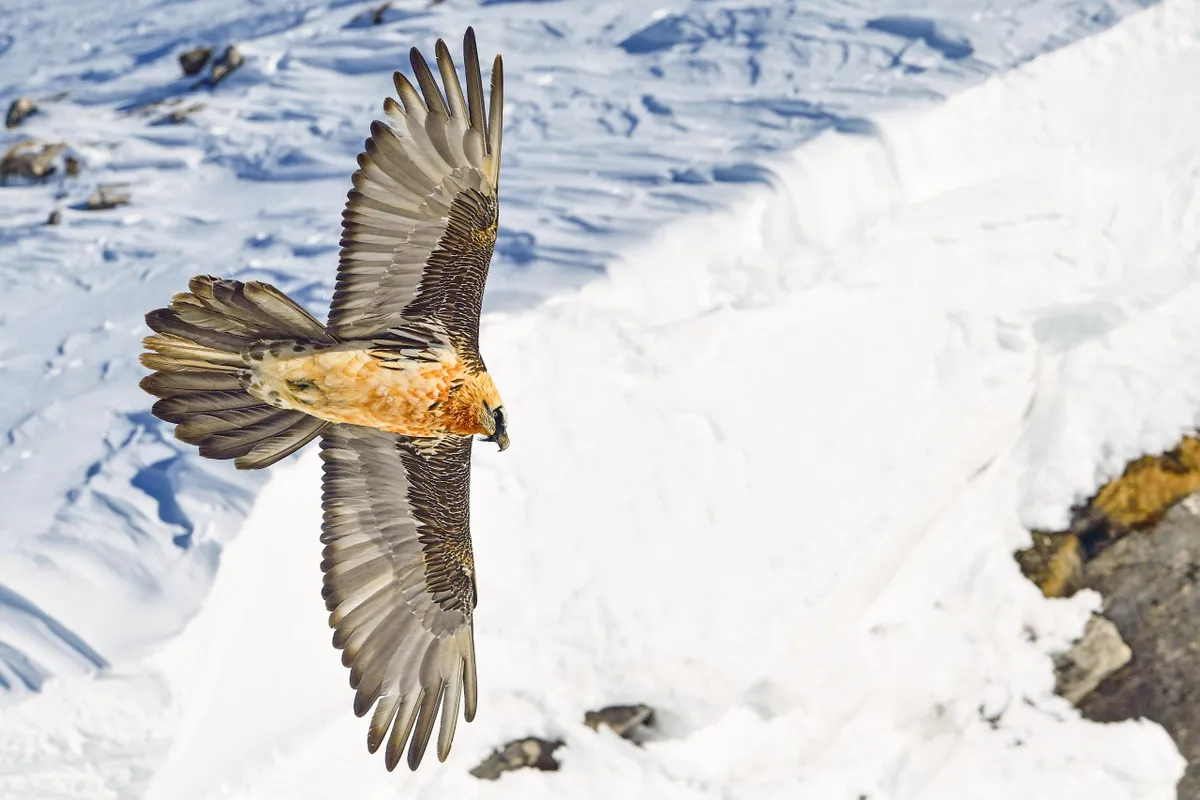
The bearded vulture is Europe’s rarest vulture. It takes approximately ten years for the species to reach sexual maturity. They lay one to two eggs, but only one nestling survives every year due to an evolutionary behaviour called ‘cainism’. This is one of the reasons why it takes a long time to bring back the species to areas where they disappeared.
The bearded vulture's diet is based on bones of dead animals, which they sometimes drop on rocks to break – they are also called bone-breakers! Bearded vultures occur in Africa, and from the Iberian Peninsula all the way to Mongolia.
In June 2020, a bearded vulture arrived in the Peak District, believed to be only the second time the species has come to the UK. It's thought the the vulture is around two years old, and had flown over from the Alps. Find out more about this vulture on the VCF website.
IUCN Red List category: Near Threatened
Cinereous vulture (Aegypius monachus)
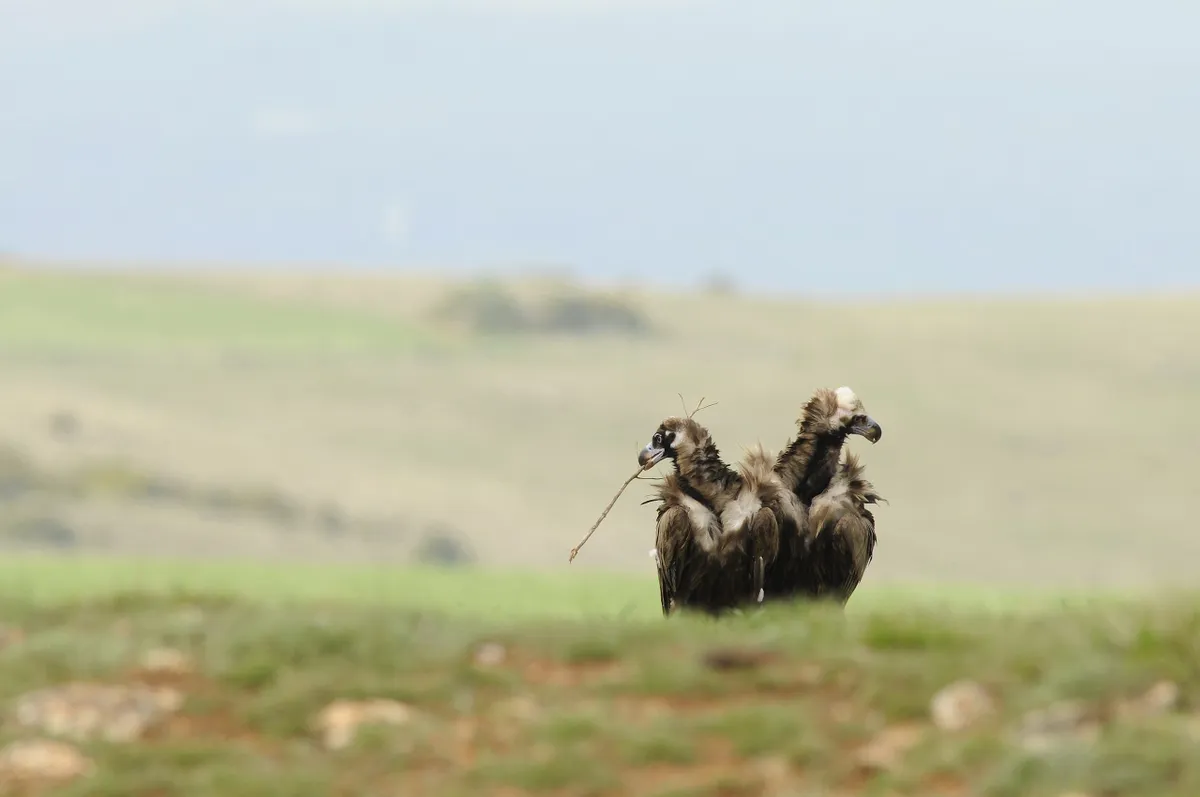
The cinereous vulture is Europe’s largest vulture and one of the heaviest and largest raptors in the world, with its wingspan almost reaching three metres. It nests in trees and sometimes on cliffs, with pairs building huge nests that they reuse every year. Cinereous Vultures occur in the Iberian Peninsula and France, and from the Balkans all the way to Mongolia.
IUCN Red List category: Near Threatened
Egyptian vulture (Neophron percnopterus)
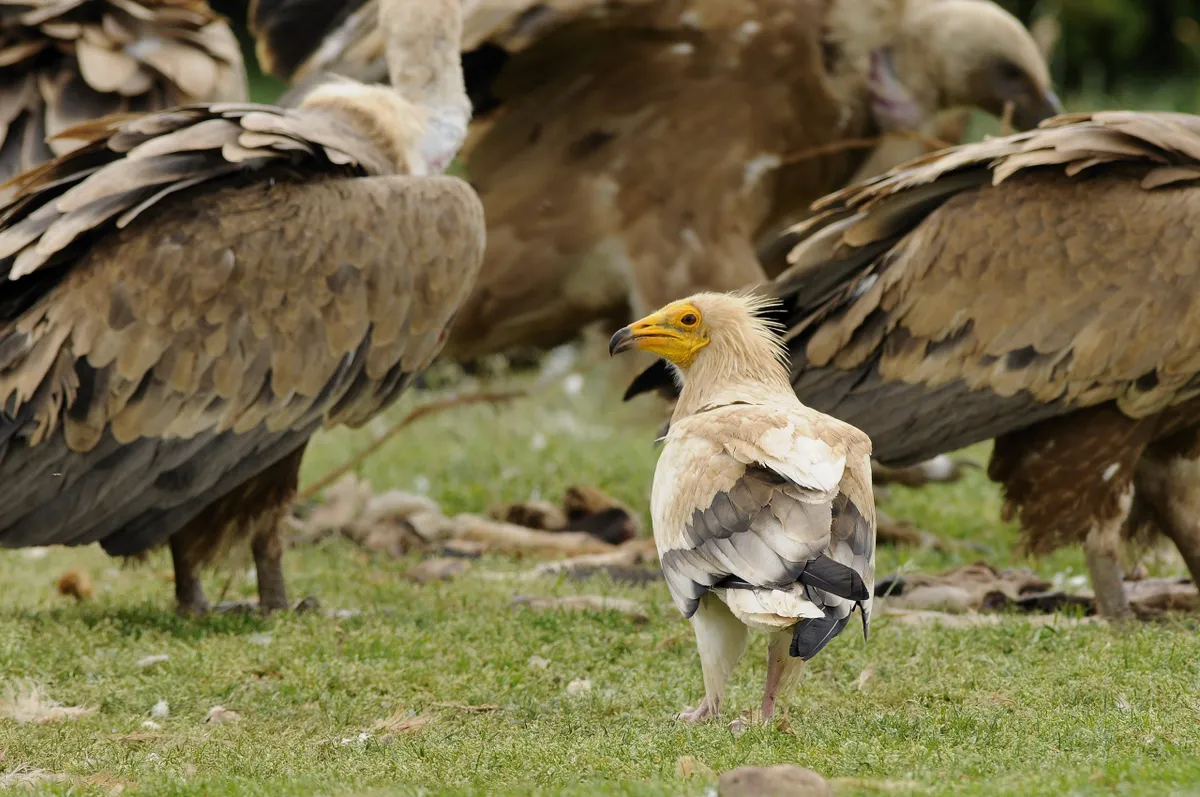
The Egyptian vulture is Europe's smallest vulture, weighing around two kilograms. It's the world's only tool-using vulture and Europe's only long-distance migratory vulture, as it migrates to Africa in winter and returns in spring. It breeds later in the year than the other European vulture species, and lays on average two eggs in April or May.
Pairs share their parental responsibilities, and build nests together in rocky areas, mostly on cliffs. Egyptian vulture also breed in Africa, the Caucusus and Middle East, and in the Indian Subcontinent.
IUCN Red List category: Endangered
Griffon vulture (Gyps fulvus)

The majestic griffon vulture is Europe’s most social and common vulture species. It feeds in groups and roosts and breeds in large colonies, some reaching hundreds of individuals. They also occur in North Africa, the Middle East and Central Asia.
IUCN Red List category: Least Concern
Rüppell's vulture (Gyps rueppelli)

There is a new vulture species in Europe: the African Rüppell's vulture. Even though there are no definite breeding records of this species in Europe yet, this African vulture frequently visits southern Europe, and in Portugal and Spain it has even tried to breed with griffon vultures.
Rüppell's vultures come to Europe mixed in the flocks of griffons that winter as far south as Senegambia, and then make a living in our continent. Recently Andalusia (Spain) has added the African Rüppell's vulture to their official list of species.
IUCN Red List category: Critically Endangered
Where do vultures live in Europe?
Vultures used to live across all mountainous regions of Southern Europe and the Alps, and although their population suffered dramatic declines over the 20th Century, they are now making a comeback. Spain is Europe’s stronghold, hosting 90% of the European vulture populations.
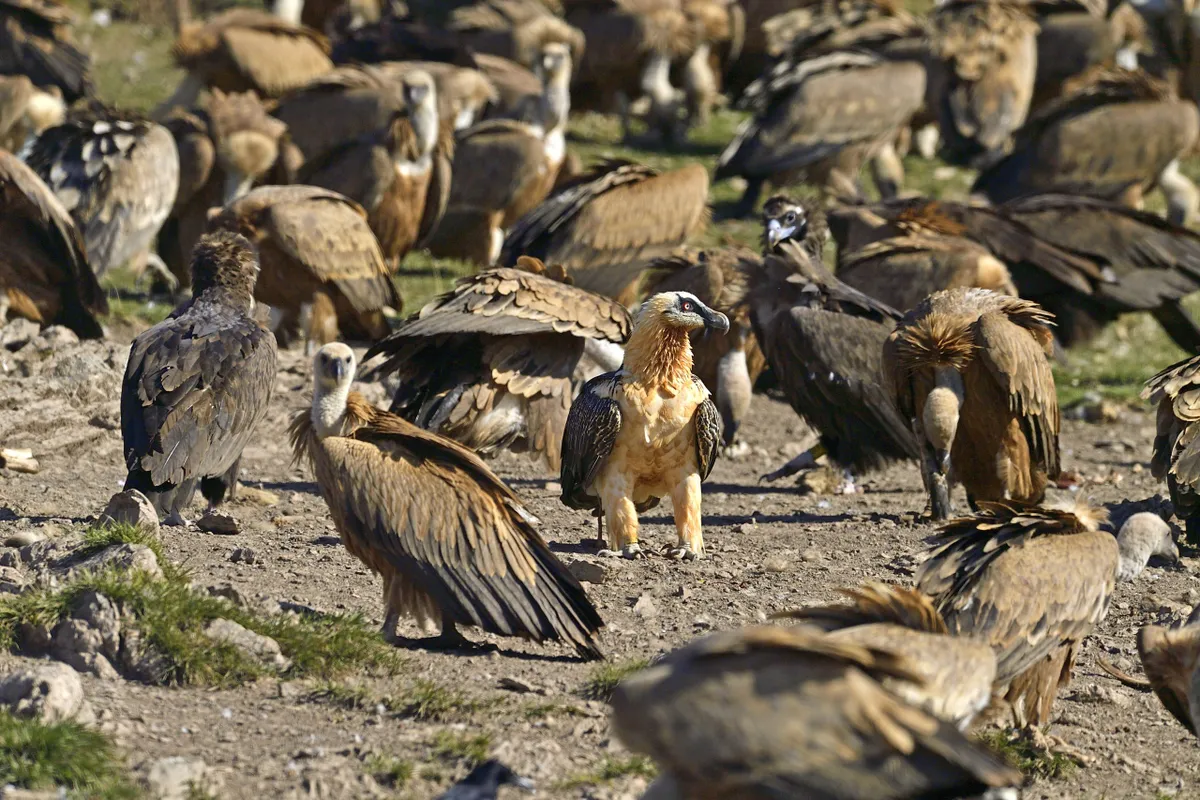
Today, the bearded vulture occurs in the Pyrenees (175 pairs), Corsica (5 pairs), Crete (9 pairs), and self-sustainable reintroduced populations in the Alps (60 pairs) and Andalusia (Spain, 4 pairs).
The cinereous vulture is present in Spain (3,000 pairs), France (reintroduced, 35 pairs), Greece (only remaining Balkan colony, 35 pairs) and Portugal (natural recolonization, 35 pairs). It is being reintroduced in Bulgaria.
The griffon vulture is the most abundant and widely distributed vulture in Europe. It is present across Spain (where there are 30,000 breeding pairs!), and can be found in France, Portugal, Croatia, Greece, Italy, Serbia, Bulgaria and Cyprus.
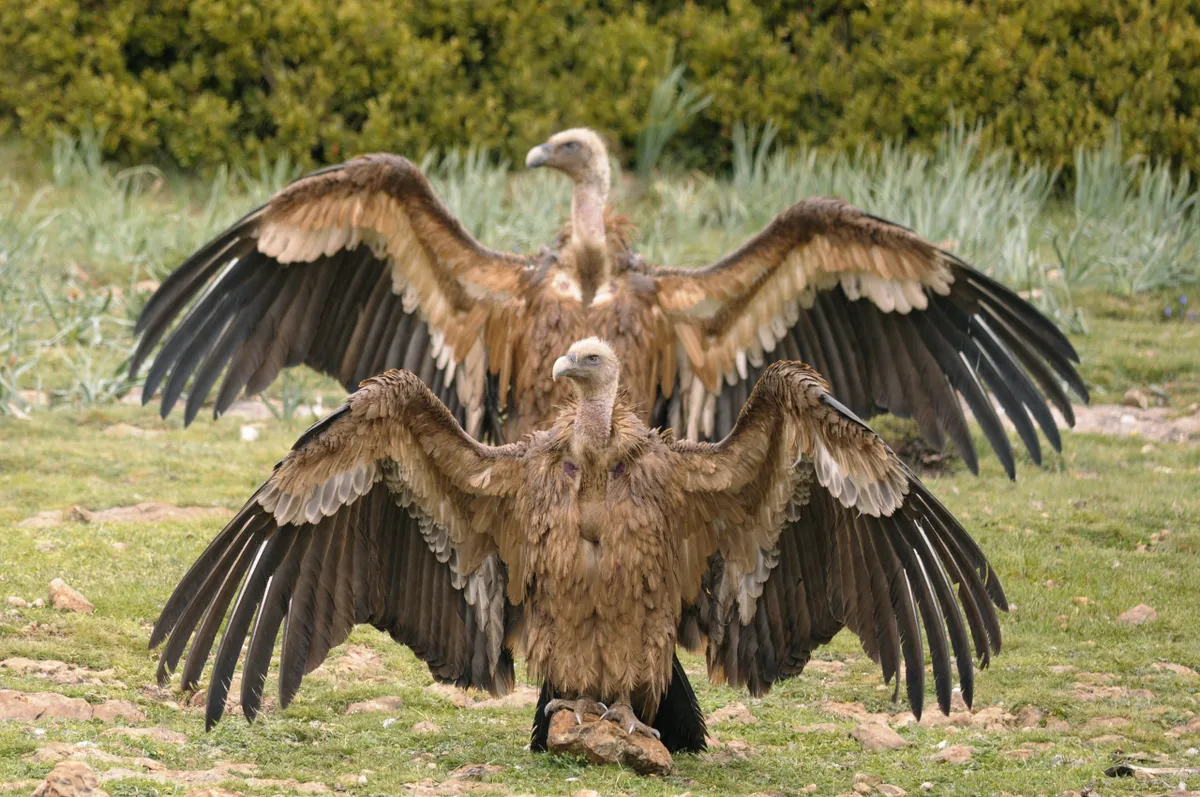
Egyptian vultures occur in Portugal and Spain (1500 breeding pairs), France (80 pairs), Italy (5 pairs) and in the Balkans (down to 60 pairs)
The majority of the European Egyptian vulture population is found on the Iberian Peninsula. The remaining populations exist in France, Italy, and the Balkans.
What do vultures eat?
Vultures are obligate scavengers. This means that they feed on animal carcasses. However, each European vulture species feeds differently.
With its powerful beak, the griffon vulture digs into a carcass first, reaching far into the carcasses of animals through natural openings to feed on the softer tissues such as muscles and viscera, thanks to their characteristic long slender necks.

The cinereous vulture tends to feed on tough tissues likme tendons, cartilages, etc.

Then the Egyptian vulture joins the feast, eating soft leftovers from bones. However, this species has a varied diet, which includes small mammals, birds, fish, eggs, animal faeces and even rotting fruit. If all European vulture species are present at a carcass, nothing is left behind.
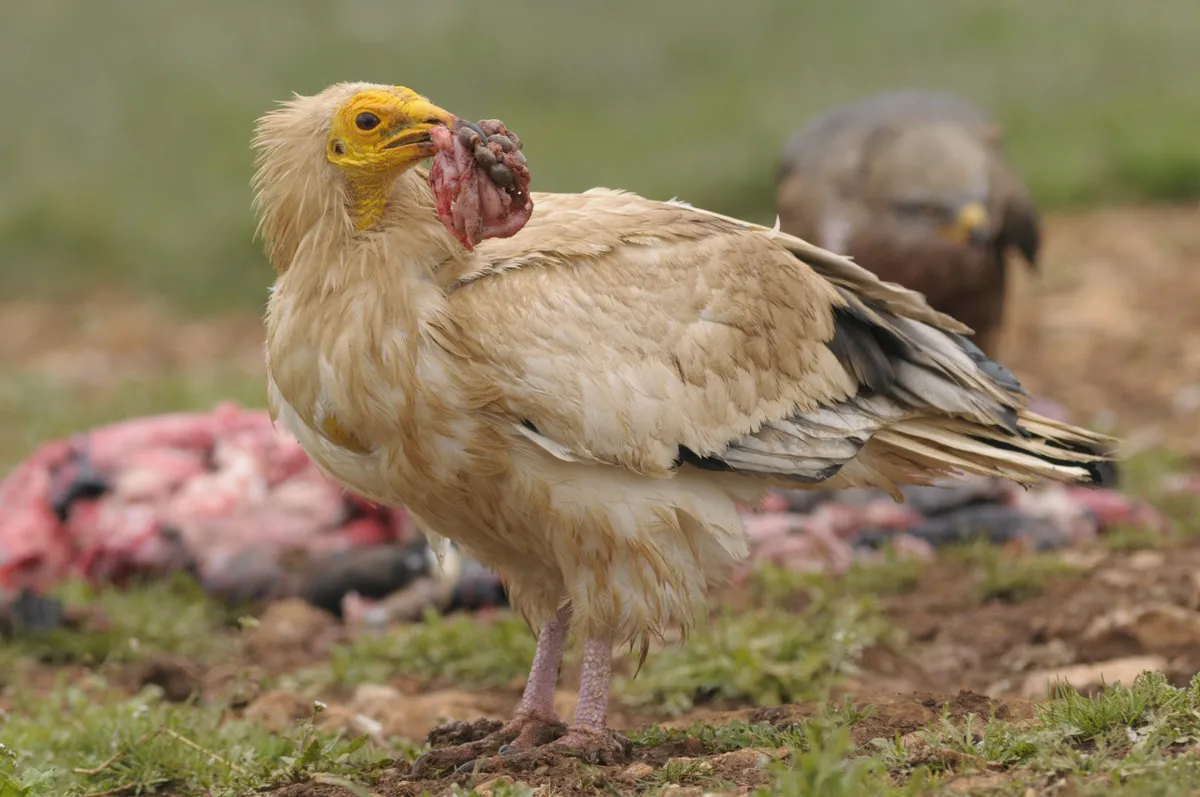
As the bearded vulture comes to finish off the carcass by eating and digesting bones that are sometimes as big as a sheep’s leg! If they are too big, they drop them onto rocks from a height of up to 100 m to shatter them.

Are vultures in Europe endangered?
Asia was the continent of vultures 40 years ago, but the use of Diclofenac caused a crash in the population there. Then Africa was the continent of vultures 20 years ago, but due to the widespread use of wildlife poisoning, seven out of the eleven vultures species on the continent are now on the brink of extinction.
Today, although it might not seem like it, Europe is the only place in the Old World where vultures are doing well. This positive result comes after many years of investment and conservation put into protecting and boosting vulture populations in Europe.
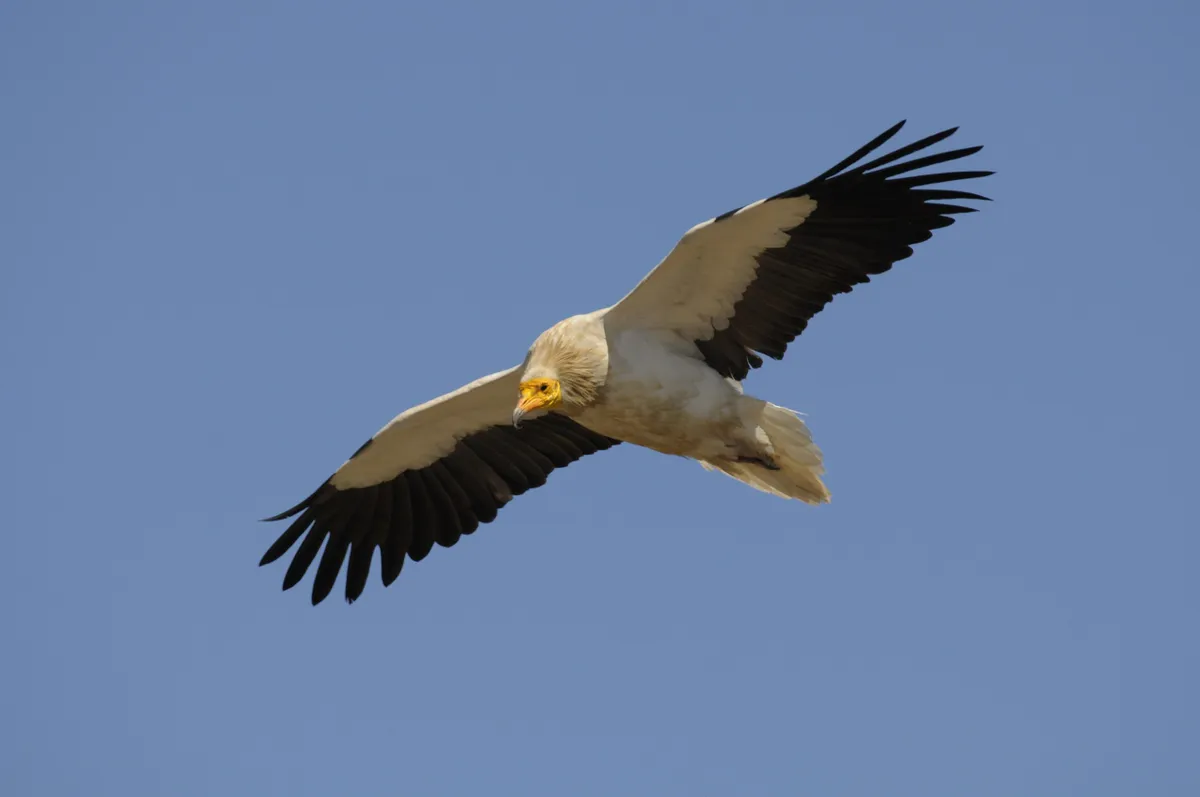
The numbers of most species are increasing in Europe, except for the Egyptian vulture in some regions where it is still decreasing and it is considered globally endangered. As Europe’s only long-distance migratory vulture, it also faces several threats across its flyway from Europe to Africa.
What threats do vultures in Europe face?
There are several threats that vultures face today, however, illegal wildlife poisoning remains vultures’ biggest threat worldwide, according to the Vulture Multi-Species Actions Plan, co-developed by the Vulture Conservation Foundation (VCF), and endorsed by the Convention of Migratory Species (CMS).
Other threats include change in farming practises, leading to the decline in food availability, electrocution and collision with the electricity infrastructure, nest disturbance and lead poisoning. The good news is that many organizations and conservationists work to tackle these threats across Europe.
What work is being done to help vultures in Europe?
The bearded vulture almost went extinct across Europe, as there were less than 70 pairs remaining in the 80s. mostly in the Pyrenees. The Vulture Conservation Foundation (VCF) and partners began a reintroduction project based on captive breeding in the 1970s to bring the species back to the Alps, and since then, it has become a pan-European project. Today, the VCF alongside partners reintroduces and restocks the species population across several important regions in Spain, France and the Alps.

Please note that external videos may contain ads:
Bearded vulture reintroduction in the Swiss Alps. © Vulture Conservation Foundation
Thanks to different projects protecting breeding sites, fighting poisoning and reintroducing birds, the cinereous vulture is returning to former ranges following its drastic decrease over the 20th Century.
The numbers greatly increased in Spain, reaching around 3,000 pairs, providing wild-hatched rehabilitated birds to international reintroduction projects, including in France and in Bulgaria, where the VCF is involved.
Please note that external videos may contain ads:
Cinereous Vulture Reintroduction — From Spain to France and Bulgaria
Projects in Iberia, France and the Balkans have been workings for years to strengthen the populations of the Egyptian vulture reducing mortality through tackling the most important threats such as food shortages, habitat loss, electrocution and the illegal use of poison.
The griffon vulture perhaps made the most extraordinary comeback out of the four native vulture species following its decline in the 20th century. Today, its breeding population exceeds 35,000 pairs in Europe, including over 30,000 pairs in Spain alone. Restocking projects continue in places where the species is still vulnerable, including in Bulgaria, Sardinia and Cyprus.

One of the projects tackling vultures’ biggest threat is the MAVA-funded Balkan Anti-Poisoning Project, coordinated by the VCF. This is a cross-border initiative bringing together wildlife conservation organisations, governmental agencies and other stakeholder such as; hunting associations, farmers and scientists, in six Balkan countries to tackle illegal wildlife poisoning. Efforts to tackle this threat will now expand thanks to the new BalkanDetoxLIFE project, funded by the EU.
The Vulture Conservation Foundation (VCF) is an international NGO committed to the conservation of European vultures. The VCF has extensive experience in captive breeding, reintroduction and restocking of vultures, and protection and conservation of vultures in their natural habitats, and is involved in many large-scale vulture conservation projects across Europe, from Portual and Spain to the Alps, and throughout the Balkans to Greece and Cyprus.
Main image: Cinereous vulture. © Bruno Berthemy
